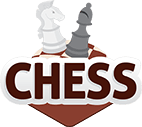Introduction
The Ludo is played with 4 players, each one plays it by themselves. An own game board is used, together with a six sided dice and 4 sets of 4 pawns, where each set is of a different color. Each player uses one of the set pieces? to play.
Game Board
The Ludo Game Board has 72 places in all, besides the 4 initial areas and 4 ending areas. These areas have different colors that are the same as the pawns. Between the 72 places, 20 of them are part of the 4 final sets that are also the same color. This way, each player has an initial area and a final line and a final place.
Game Match
Each player starts with the four pawns in the initial places that are setted in the initial areas. The match is played in individual shifts, and after each shift the turn is passed to the next player clockwise (to the player on the left of the player of the time). The player that starts the game and plays the first shift is raffled.
Objective
The objective of the player is to conduct all their pawns through the game board from the initial areas until the final areas of their color.
Shift
In a Ludo?s shift, the player of the time receives the dice and throws it. The dice?s result determinates which movements are possible to do in this shift. After they move one of their pawns (if it is possible), he passes the turn to the next player.
Some situations allow that the player plays extra turns. The extra shift is played the same way, that is, the player throws the dice and makes the move. A lot of extra shifts can occur after, if the player fulfills the conditions.
Leaving the Initial Area
The player can not move freely a pawn if it is not in the initial place. They need to take 6 in the dice to do that.
In case the player takes 6 in the dice, they can take off one of their pawns that are in the initial area and move to the entrance of their color. This place of entrance is colorful and is close to the initial area. The pawns that get in this place are able to move through the game board in future moves. This movimentation ends your turn.
In case the result of the dice doesn't be 6 and all their pawns are in the initial area, they don?t have valid moves, and have to pass the turn. That occurs frequently in the beginning of the game, when all the players are with their pawns in this area.
Taking 6 in the dice
During all the game, everytime a player takes 6 in the dice, they receive an extra turn, after their movimentation. As a consequence, everytime a player puts one of their pawns in the entrance place, they can play another turn after that.
In case the player takes 6 three consecutive times, they pass the turn immediately, and don?t move any pawn.
Movimentation
In case the player one or more pawns is able to move through the game board, they can use the result of the dice to move any of it. To make it, they have to choose an able pawn and move it in the clockwise way of the game board through an amount of places exactly the same as the dice?s result. This movimentation ends up their turn.
In your movimentation, the pawn can pass freely through any place and gets into their destiny place (determinated by the result of the dice), independently of the numbers of pawns that are in that place. This way, there?s no limit to the number of pawns that a place can contain and there?s no barriers in the movimentartion.
Capture
A capture occurs when a pawn of a player ends their moves in a place where only exists a single pawn and its pawn is of an adversary player. When it occurs, the adversary pawn returns to their initial place of its respective color, and the player that made the capture receives an extra shift.
The captured pawn must be in the destiny place that is moving, and not through the way. Therefore, to capture a pawn the player has to take in the dice an exact number as the distance between their pawn to the adversary pawn.
In case the player captures a pawn after taking 6 in the dice, they receive two extra shifts : one shift for the 6 in the dice and another for the capture.
Safe Places
Some places protect the pawns that are in it and prevent their capture. Are they: places close to the entrance of each player (close to the initial areas) and the places with a symbol of a star.
In this places, even if a pawn is alone, it can not be captured. This way, if a player moves another pawn to this place, both adversaries' pawns stay together in this place.
The entrance places of each player prevent the capture of any pawn, not only pawns of the same color. This way, they are safe for any player. The same is for the places with a star.
Final line
Each player has a final line of their own color, composed of 5 colorful places. This line works as a bridge that links the simple places of the game board with the final area of the player.
The places of the final line can only be accessed for the pawns of its respective player. A pawn can get in this line only by the place next to it that is farest of the center of the game board, that is reached after the pawn gives almost a complete round through the game board. No pawn can pass the entrance of the line of the same color and give a complete round in the game board.
As the only pawns that can enter in the final lineare the pawn of its respective color, the final line places are automatically safe.
Final Area
To put a pawn in the final area, the player has to take a result exactly the same as the distance between their pawn and this area. In case they reach this result, they can move their pawn til the area and end up their turn. Done this, this pawn came into its destiny and can not be moved until the end of the game.
In case the result of the dice is bigger than the distance between the pawn and the final area, this pawn cannot be moved.
Every time that a player comes with one of their pawns in the final area he receives an extra shift. In case the player does that after taking a 6 in the dice, he receives two extra shifts: one for the 6 in the dice and another for the final area.
End of the game
The game?s end when a player comes with all their 4 pawns in the final area. This player is the winner. At GameVelvet, the order of classification of the players is determined after the check of points.
Score
The score of each player is calculated based on how far they are from the initial area their pawns are at the end of the game. Each pawn that came in the final place costs 250 points, and the rest of them cost as points as their distance that they are from the initial area. The winner always ends the game with 1000 points.
Example: at the end of the game, a player came with a pawn in the final space (250 points), walked 20 spaces with another pawn (20 points), put a pawn in the entrance space (1 point) and finished with a pawn in the initial area (0 points). This player summed 271 points.
Complementary Rules and Considerations
In your turn, the player is forced to move a pawn. They can only skip the turn if there?s no possible moviment. This situation can only occur if they don?t take specific numbers in the dice and have all the pawns in these places: final line, initial area or final.
Take 6 in the dice doesn?t force the player to take a pawn from the initial area. In case they have another pawn in the game board, they can move it if it's possible.
When a player takes 6 in the dice three times followed, none of their pawns back to the initial area as happens in Parchis. In the Ludo, the player only skip the shift.
In Ludo doesn?t exist the +1 bonus in the dice that exists in Parchis. The result in the dice in Ludo never modifies.
Extra Followed Shifts
Is possible that a player plays a lot extra followed shifts, in case it does a combination of the following situations that create these shifts: take 6 in the dice, make captures and put pawns in the final area.
Example:- Shift 1) the player take 6 (receives an extra shift) and moves;
- Shift 2) the player takes 6 (receive an extra shift) and move;
- Shift 3) the player takes 3, moves and capture a pawn (receives an extra shift)
- Shift 4) the player takes 6, moves and come with a pawn in the final area (receives two extra shifts)
- Shift 5)the player takes 2 and move;
- Shift 6) the player takes 4 and moves;
In this example, the player took 6 three times, but not followed, therefore doesn?t receive the penalty of skipping the shift.
Learn how to play other Traditional Board Games
Amplify your knowledge at Board Games reading the rules and watching videos from similar games to Ludo .











